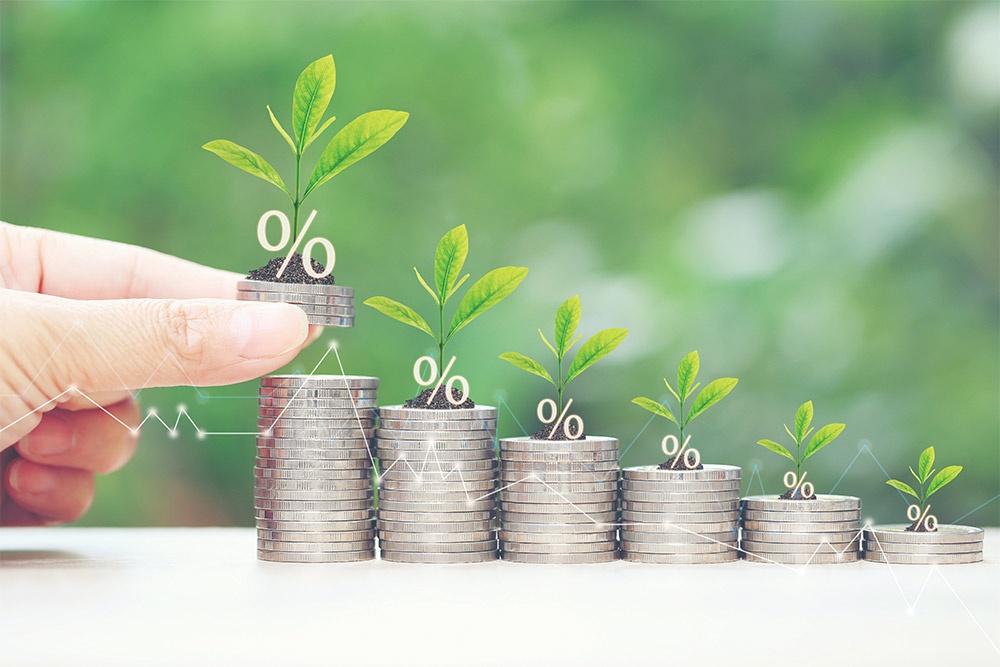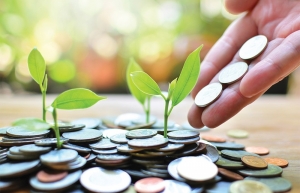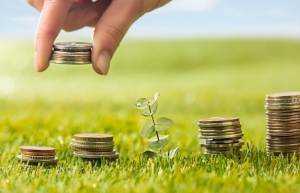Lenders seek regulations to disburse green finance
In early August, BIDV launched a green credit package worth $416.7 million for enterprises investing in new or expanding green projects, retrofitting existing buildings, or securing aforementioned certifications.
 |
| Lenders seek regulations to disburse green finance |
BIDV’s programme offers enterprises preferential loan interest rates, quick disbursement, and expert consultation for project financing and will run until the end of 2025.
Previously, BIDV rolled out a green credit package of $175 million specifically for textile and garment enterprises in their green transition efforts.
As of April, BIDV ranked among the largest green credit providers, with a total outstanding balance of $3.05 billion, representing 4 per cent of its total credit portfolio, financing over 2,000 green projects from nearly 1,700 clients. The bank has committed to using all raised funds to support green projects in renewable energy, clean energy, and green buildings, contributing to environmental protection and fostering sustainable development awareness.
TPBank unleashed incentive loan packages last year worth $208 million for businesses to support green projects. These businesses benefit from a free lending rate for the first three months when implementing green projects in areas such as renewable and clean energy, transportation, agriculture, sustainable water and waste management, as well as green construction and real estate.
Eligible businesses can enjoy additional incentives if projects meet international standards such as EDGE, BCA Green Mark, LEED Gold/Platinum certification, or those from the Vietnam Green Building Association. Projects involving sustainable production and processing are also eligible.
VietinBank, MSB, and ACB have also introduced incentive loan packages to support businesses developing green projects. Meanwhile, various other credit institutions have launched tailored green credit packages to meet specific business needs and facilitate green transformation.
For instance, in April, Standard Chartered Bank Vietnam signed an MoU with the US Agency for International Development to mobilise private investment in advanced energy systems like rooftop solar power, upgrading the power grid, and promoting power trading initiatives.
Additionally, in the same month, United Overseas Bank (UOB) Vietnam signed a green trade finance deal with Ben Tre Import and Export Company, headquartered in the Mekong Delta province of Ben Tre.
Assoc. Prof. Dr. Nguyen Dinh Tho, general director of the Institute of Strategy and Policy on Natural Resources and Environment, under the Ministry of Natural Resources and Environment, emphasised that leading in green finance is essential for Vietnam to stay ahead of the trend.
“The country that takes the lead in green finance will be ahead of the curve, while those that follow will struggle to participate in the market. Mobilising green finance is key for Vietnam to successfully implement its national strategy on green growth,” Tho said.
He highlighted that for businesses to draw in green investment, they must comply with regulations related to environmental, social, and governance (ESG) standards, carbon emissions, and environmental protection.
“Adherence to directives like corporate sustainability reporting could open up significant opportunities for Vietnamese businesses to access green funding. Investing in ESG data collection and analysis systems will enhance competitiveness and unlock financial resources from international organisations,” Tho added.
The growing global and domestic emphasis on sustainable development has driven a surge in demand for capital to support ESG goals. According to the World Bank, to implement the green growth roadmap and achieve net-zero emissions by 2040, Vietnam will need an additional annual investment equivalent to 6.8 per cent of its GDP – around $368 billion. To meet this demand, innovation in financial structures and policies, as well as close cooperation between the government, banks, and enterprises, is essential.
Despite banks being prepared to offer green finance packages, disbursement faces several challenges. According to McKinsey & Company, 70 per cent of consumers are willing to pay over 5 per cent more for green products compared to their traditionally produced counterparts. However, even with the advantage of lower interest rates for green loans, Vietnam’s capital inflow is only around 80-90 per cent amid recent high interest rates.
Experts note that the promotion of green credit faces persistent challenges, particularly the lack of a green classification list, which is crucial for the SBV to evaluate the effectiveness of credit policies in achieving national green growth targets.
During a workshop on unlocking financial resources for economic growth, co-organised by VnEconomy and the Party Central Committee’s Economic Commission in Hanoi on August 23, Nguyen Quynh Chi, country director of sustainable finance at MUFG said a few years ago, businesses were struggling in the digital transformation journey. Now, they are facing similar challenges in the green transformation journey.
“The banking system contributes over half of the market’s capital supply. Currently, banks must adhere to international green standards, yet each institution follows its own criteria. Thus, both banks and businesses are awaiting government support in establishing green classification criteria and green transformation funds,” said Chi.
Vo Hoang Hai, deputy general director of Nam A Bank, pointed out that while green credit in Vietnam represents 4.53 per cent of total credit, this ratio is not entirely accurate due to the lack of consensus on green criteria among banks.
“There are no specific regulations on the green legal framework, especially regarding common standards for each industry and cost screening factors,” Hai said.
Nam A Bank began disbursing green credit in 2018. However, both credit institutions and businesses face substantial costs related to manpower and resources, which has led to a low proportion of green credit in the bank’s overall portfolio.
 | Opportunities to unlock in Vietnam’s green finance arena In recent years, financial institutions have pivoted from solely emphasising green finance to investing in businesses that both adapt to and mitigate climate risk impacts. |
 | Green finance discord to be addressed Establishing a detailed green classification system and independent evaluation are recognised as key elements for steering Vietnam’s green finance sector in line with international standards. |
 | Greater green finance measures can entice investors Attaining green finance faces significant challenges in Vietnam, including the absence of a legal framework and policy, as well as a lack of coordinated incentives. |
What the stars mean:
★ Poor ★ ★ Promising ★★★ Good ★★★★ Very good ★★★★★ Exceptional
Related Contents
Latest News
More News
- From easy money to selective bets: investment prospects for Vietnam in 2026 (January 06, 2026 | 16:51)
- Stock market starts 2026 with growth and governance in focus (January 06, 2026 | 08:45)
- Cake by VPBank posts strong gains in scale and efficiency leveraging AI focus (January 05, 2026 | 18:55)
- Banks step up listing plans in 2026 to strengthen capital and transparency (December 31, 2025 | 18:59)
- Ho Chi Minh City projects $10.5 billion remittance inflows in 2025 (December 31, 2025 | 18:58)
- New decree sharpens enforcement in securities market (December 31, 2025 | 18:53)
- Gold market reform advances as SBV receives applications for bullion production (December 30, 2025 | 12:07)
- EVN and AFD sign credit agreement for Vietnam’s first pumped storage hydropower plant (December 30, 2025 | 10:06)
- Techcombank Priority Visa Signature unlocks a higher standard of living (December 29, 2025 | 16:44)
- Tax sector wraps up 2025 and sets priorities for next year (December 25, 2025 | 14:00)

 Tag:
Tag:

















 Mobile Version
Mobile Version